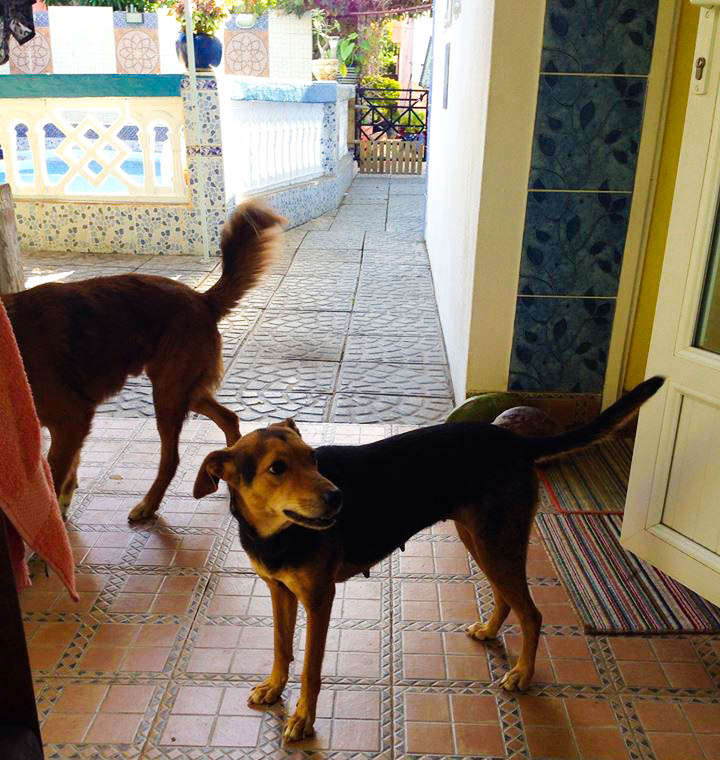Not Quite Wild
by Vlad Chituc, Amy McDermott, and Melissa Nehmens
Cats at the research station, dogs on the farm– these are a few of the domestic animals we've met in the field.
Toad, 2014.
Toad was starving and sick on the streets of Puerto Rico only two years ago. He was 30 pounds, malnourished, and infested with parasites when he showed up at the doorstep of Dr. Laurie Santos, a professor of psychology and cognitive science at Yale.
Dr. Santos and her research group study rhesus macaques (a type of monkey) on the island of Cayo Santiago, a field site off of Puerto Rico. She has a house on the main island, where Toad first appeared. Dr. Santos and her field team slowly nursed him back to health and brought him to the US, where he found a permanent home with Vlad, one of Laurie's students.
"He's pretty much the coolest dog I know, and he's as excited that he's alive as I am, which is very much."
-Vlad Chituc (Toad's dad).
Station cat, 2013.
Community Baboon Sanctuary, Belize District, Belize.
-Amy McDermott
Orejas (Spanish for "ears") Monteverde, Costa Rica. 2009
"I met Orejas while on a tropical ecology field study through the University of California. He was just a kitten then, and the newest member of my homestay family. Five years later, and 3000 miles away, I still miss him."
-Amy McDermott.
Two skittish dogs in the Republic of Mauritius, 2013.
"We were working at a fishery center in Mauritius on deep-sea species from the southern Indian Ocean. I never knew the names of the dogs because they didn't have tags or collars... They were very sweet though and happily scooped up any crumbs or scraps we dropped. They loved the attention we gave them!"
-Melissa Nehmens.



